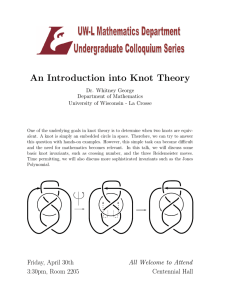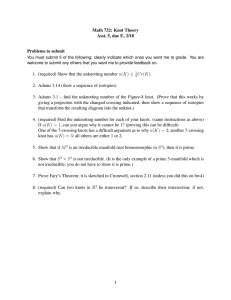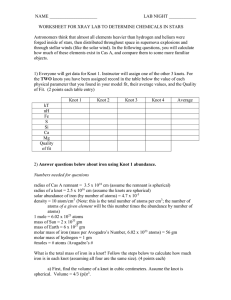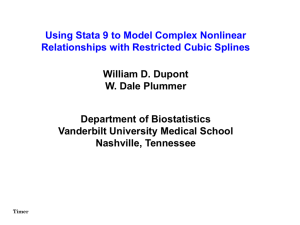Math 732: Knot Theory Asst. 2, due Th., 1/27, 10am
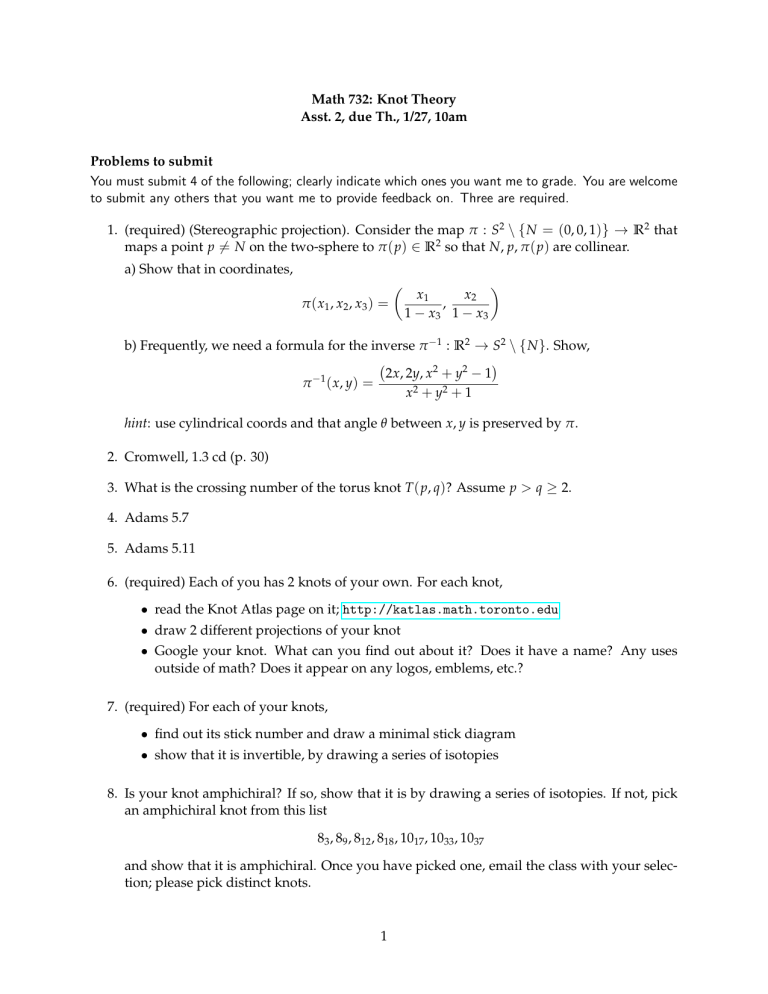
Math 732: Knot Theory
Asst. 2, due Th., 1/27, 10am
Problems to submit
You must submit 4 of the following; clearly indicate which ones you want me to grade. You are welcome to submit any others that you want me to provide feedback on. Three are required.
1. (required) (Stereographic projection). Consider the map
π
: S
2 maps a point p
\ {
N = ( 0, 0, 1 )
} →
R 2 that
= N on the two-sphere to
π
( p )
∈
R 2 so that N , p ,
π
( p ) are collinear.
a) Show that in coordinates,
π
( x
1
, x
2
, x
3
) =
1 x
1
−
x
3
, x
2
1
−
x
3 b) Frequently, we need a formula for the inverse
π
− 1
:
R 2
→
S
2
\ {
N
}
. Show,
π
− 1
( x , y ) =
2 x , 2 y , x
2
+ y
2
−
1 x 2 + y 2 + 1 hint : use cylindrical coords and that angle
θ between x , y is preserved by
π
.
2. Cromwell, 1.3 cd (p. 30)
3. What is the crossing number of the torus knot T ( p , q ) ? Assume p > q
≥
2.
4. Adams 5.7
5. Adams 5.11
6. (required) Each of you has 2 knots of your own. For each knot,
• read the Knot Atlas page on it; http://katlas.math.toronto.edu
• draw 2 different projections of your knot
• Google your knot. What can you find out about it? Does it have a name? Any uses outside of math? Does it appear on any logos, emblems, etc.?
7. (required) For each of your knots,
• find out its stick number and draw a minimal stick diagram
• show that it is invertible, by drawing a series of isotopies
8. Is your knot amphichiral? If so, show that it is by drawing a series of isotopies. If not, pick an amphichiral knot from this list
8
3
, 8
9
, 8
12
, 8
18
, 10
17
, 10
33
, 10
37 and show that it is amphichiral. Once you have picked one, email the class with your selection; please pick distinct knots.
1
